
Sardis, capital city of the Lydian and Persian kings, stronghold of the Seleukid kings, metropolis of Roman Asia, and episcopal see in the Byzantine period, has been the focus of archaeological research since the early 1900s. This monograph focuses on the over 8,000 coins minted in the Lydian, Hellenistic, Roman, and Byzantine periods that were excavated between 1973 and 2013 in the Harvard-Cornell Expedition.
The book places coins within eastern Mediterranean historical, cultural, and economic contexts, in order to better understand the monetized economy of Sardis. It adds important archaeological context to shed light on the uses of coins and the nature of the deposits, with attention paid to the problems of monetary circulation and chronological development of the deposits, especially in the Late Roman period. Statistical analyses, including a new method of analyzing the deposits, help define the nature and chronological horizons of the strata. A catalog of the coins concludes the main body of the study, followed by appendices on countermarks, monograms, and statistical analyses.
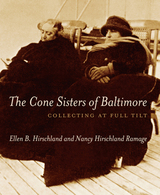
This richly illustrated biography documents their lives from a unique perspective: that of their great-niece, who wrote this book with her daughter. Ellen B. Hirschland and Nancy Hirschland Ramage delve into Claribel’s and Etta’s world, following the sisters through letters and personal stories as they travel to meet some of the artists whose works would turn their adjoining apartments into a gallery. They bought art by Manet, Gauguin, and Cézanne, as well as of Picasso and Matisse, whom they came to know well. The sisters’ experiences in Paris from 1901 through the 1920s provide an exceptional view of the bright artistic ferment in the city at that time. They were two Victorian women from Baltimore buying avant-garde masterpieces, attending salons with friends Gertrude and Leo Stein, and building a collection that would initially enrage the conservative people around them. Only with time would their keen eyes and unwavering taste prove them right.

Although the treasury of King Croesus held great quantities of gold and silver plate, the Lydians clearly loved fine ceramic wares imported from Greece. This preference was entirely appropriate for the capital of the expansive Lydian Kingdom, which occupied a pivotal position between the city states of the Greeks and the gigantic empire of the Persians. The importation of Greek pottery corresponds to the visits from poets, philosophers, and politicians mentioned by the historian Herodotus.
This collaborative work consists of three generously illustrated sections presenting the ceramic finds excavated at Sardis, but produced in the mainland Greek centers of Corinth, Athens, and Sparta. Judith Snyder Schaeffer analyzes the Corinthian imports, Nancy H. Ramage the Attic, and Crawford H. Greenewalt, Jr., the Lakonian. Their study of this material from the Harvard-Cornell excavations at Sardis offers new evidence of the taste for specific Greek wares and shapes in Anatolia before the time of Alexander the Great.
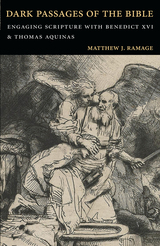
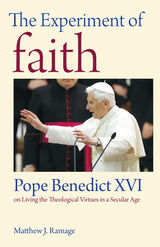
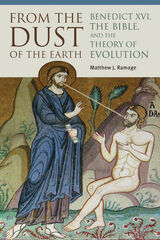
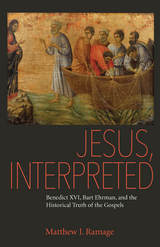



From the sixth to the fourth century B.C., the western Anatolian region of Lydia was home to a distinctive local tradition of ashlar masonry construction. The earliest datable example of fine stone masonry in the environs of Sardis, the capital of the Lydian empire, is the tomb of King Alyattes, who died in ca. 560 B.C. Contemporary monuments include a city gate and monumental terraces. Alyattes’ son Croesus was overthrown by the Persians in 547 B.C., but the Lydian building tradition survived in chamber tombs at Sardis and throughout Lydia.
This richly illustrated volume examines the monuments of Sardis and environs in the context of contemporary developments in Lydia and throughout the ancient Mediterranean and Near East. The study of Lydian architecture illuminates traditions of Anatolian kingship, technological exchange between Lydia and Greece and the Near East, and the origins of Persian imperial architecture.


Ancient Sardis, the capital of Lydia, was of outstanding importance: in the Lydian period it held the residence of the kings and subsequently, under Persian rule, the satraps. Throughout antiquity it remained an administrative center. Travelers of modern times and archaeological excavations have revealed, from the city site and its surroundings, inscriptions written mostly in Greek, some in Latin. Their texts deal with all kinds of subjects: decrees, public honors, civil and sacred laws, letters, epitaphs, and more.
In the corpus “Sardis VII 1” (1932) W. H. Buckler and D. M. Robinson published all inscriptions (228 items) known up to 1922, after which year excavation at Sardis came to a halt because of the Greek-Turkish war. Since excavation resumed in 1958, a portion of the Greek and Latin inscriptions has been published in various, widely scattered places; another portion, containing important texts discovered during the last ten years, was until now unpublished. The aim of this monograph is to present in a comprehensive corpus the entire epigraphic harvest (485 items) made in Sardis and its territory since 1958. Each inscription is accompanied by a description of the monument, bibliography, translation, and commentary; indices, concordances, photographs, and maps complement the collection.
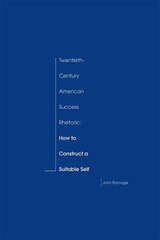
Self-help authors like Tom Peters and Stephen Covey, who have dominated best-seller lists over the last two decades, have exercised increasing influence on political, governmental, and educational organizations. By contrast, the topic of American success books— texts that promise to help readers succeed by retrofitting their identity to meet workplace demands—has been ignored by scholars since the 1980s. John Ramage challenges the neglect of this hugely popular literature and revives a once-lively conversation among eminent critics about the social phenomenon represented in the work of Bruce Barton, Dale Carnegie, and Norman Vincent Peale, among others.
Using literary texts from Don Quixote to Catch-22 to gloss the discussion, Ramage utilizes Kenneth Burke’s rhetorical theory to understand symbolic acts and social issues and brings together earlier commentaries within a new critical framework. He considers the problematic and paradoxical nature of success and examines its meaning in terms of its traditional dialectic partner, happiness. A synopsis of seventeenth- to nineteenth-century forerunners prefaces this analysis in which Ramage links literary code heroes with the activities of twentieth-century business leaders to determine whether, in the search for authenticity, the heroic individual or the corporation is ultimately served.
This comprehensive study chronicles the legitimation of the success book genre, enumerates rhetorical strategies used to win over readers, and supplies the historical context that renders each book’s message timely. After considering some of the dangers of crossing disciplinary borders, as exemplified by Deborah Tannen’s work, Ramage critiques Stanley Fish’s theoretical strictures against this practice, finally summoning academic critics to action with a strong call to exert greater influence within the popular marketplace.
READERS
Browse our collection.
PUBLISHERS
See BiblioVault's publisher services.
STUDENT SERVICES
Files for college accessibility offices.
UChicago Accessibility Resources
home | accessibility | search | about | contact us
BiblioVault ® 2001 - 2024
The University of Chicago Press









